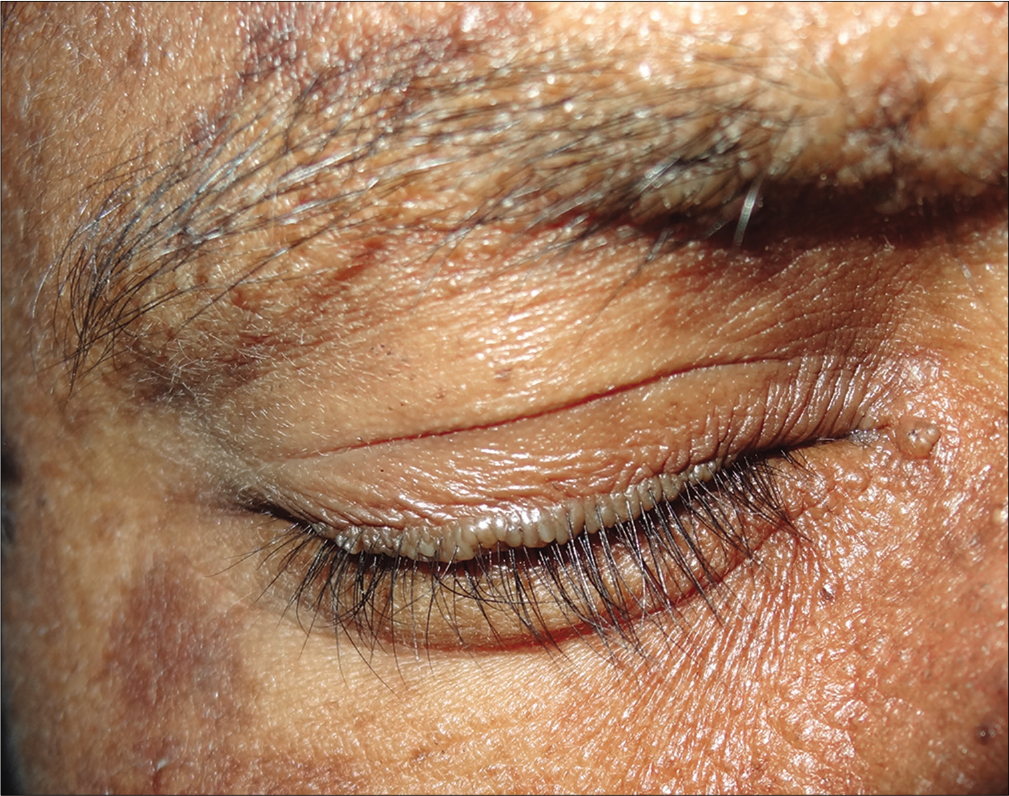Translate this page into:
Moniliform blepharosis: A characteristic sign of lipoid proteinosis
Corresponding author: Dr. Anupam Das, Building “Prerana,” 19 Phoolbagan, Kolkata - 700 086, West Bengal, India. anupamdasdr@gmail.com
-
Received: ,
Accepted: ,
How to cite this article: Gandhi S, Das A. Moniliform blepharosis: A characteristic sign of lipoid proteinosis. Indian J Dermatol Venereol Leprol 2022;88:523-4.
A 28-year-old man presented to the dermatology outpatient department with a coarse-looking face, waxy papules, verrucous plaques and scars over the body. He also had hoarse voice since childhood.
Cutaneous examination revealed a row of waxy, yellow–white, beaded papules along the margin of upper eyelid [Figure 1]. The eyelashes had grown out normally, but the papules appeared to be encircling them. This is referred to as moniliform blepharosis because it appears like a string of beads. It is a pathognomonic feature of lipoid proteinosis, an autosomal recessive hyaline deposition disorder, and is caused by mutations in the extracellular matrix protein 1 gene.

- Row of waxy, yellow–white, beaded papules along the margin of the upper eyelid
Declaration of patient consent
The authors certify that they have obtained all appropriate patient consent.
Financial support and sponsorship
The study was supported by Institution.
Conflicts of interest
There are no conflicts of interest.





